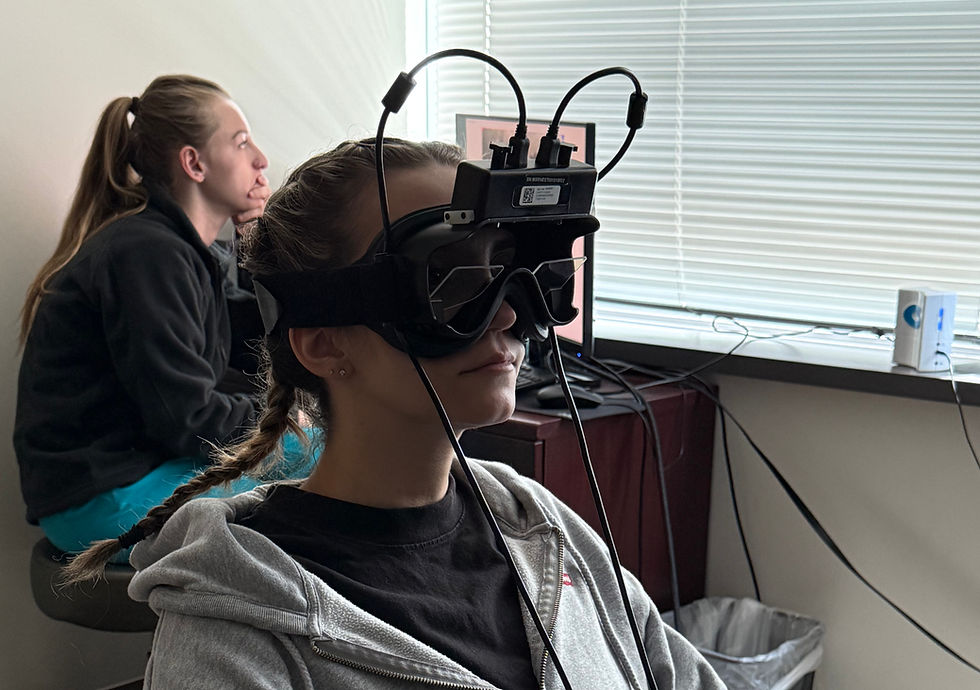Why Eye Movement Testing Matters: How Oculomotor Assessment Helps Patients Heal
- Plasticity Brain Centers
- Aug 29
- 2 min read
Updated: Sep 15
Most of us don’t give much thought to our eye movements—we simply use them to read, scan a room, or track something in motion. But those tiny shifts in the eyes reveal a lot about how the brain is functioning.

At Plasticity Brain Centers, we use oculomotor assessment to uncover how well the brain and eyes are working together. This testing not only helps explain symptoms like dizziness, fatigue, or poor concentration, but it also guides therapies that strengthen brain connections and restore confidence.
What Is Oculomotor Assessment?
Oculomotor assessment measures how your eyes move, track, and stabilize during different tasks. This includes:

Smooth pursuits – following a moving target.
Saccades – quickly shifting between objects.
Gaze stability – keeping vision steady during head movements.
Convergence/divergence – focusing near and far.
Each of these tasks gives us insight into how well your brain processes sensory input and communicates with the body.
Why It’s So Important
When your eyes don’t move the way they should, your brain has to work harder to keep up. This often shows up as:

Dizziness and balance problems
Headaches or eye strain
Difficulty reading or focusing
Sensitivity to busy environments
Slower recovery after a concussion or brain injury
Much like posturography reveals how your body maintains balance, oculomotor assessment shows us how your brain handles visual and spatial processing. Together, these tools give a more complete picture of your neurological health.
Benefits for Patients
With oculomotor assessment, patients gain more than just answers—they gain a personalized path forward. Testing can help:
Target therapies – by pinpointing which brain systems need the most support.
Improve stability – by strengthening the connection between vision and balance.
Enhance focus – making tasks like reading and learning less frustrating.
Reduce symptoms – including dizziness and motion sensitivity.
Track recovery – so you can see the progress you’re making.

Part of a Bigger Healing Process
At Plasticity Brain Centers, we don’t just look at one system—we consider the whole picture. Eye movement testing is often combined with therapies that strengthen brain connections.
For example, in our blog on cortical remapping and how the brain creates new neural connections, we explored how the brain can adapt and reorganize itself after injury. Oculomotor assessment fits into this process by identifying where new connections need to form, and then guiding treatments that encourage this rewiring.
Similarly, in our post about photobiomodulation and Mal de Débarquement Syndrome, we discussed how innovative therapies can calm neural overactivity. When combined with diagnostic tools like eye movement and balance testing, patients receive care that’s both targeted and holistic.
The Bottom Line
Your eye movements may be small, but they tell a big story about your brain. Through oculomotor assessment, patients can uncover hidden challenges, guide therapy choices, and experience meaningful improvements in daily life.
At Plasticity Brain Centers, we use eye movement testing alongside posturography and other advanced tools to help patients restore balance, clarity, and confidence.


